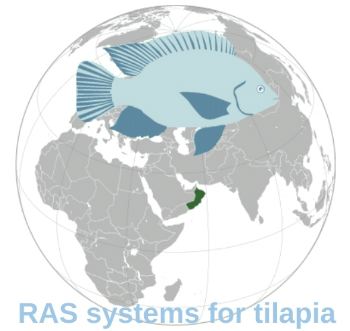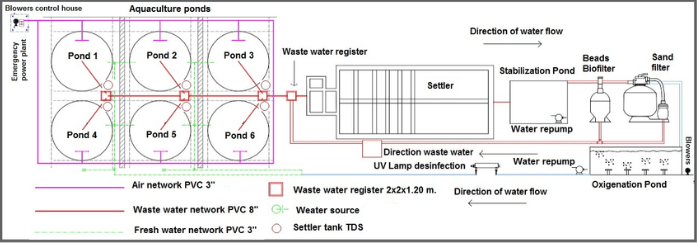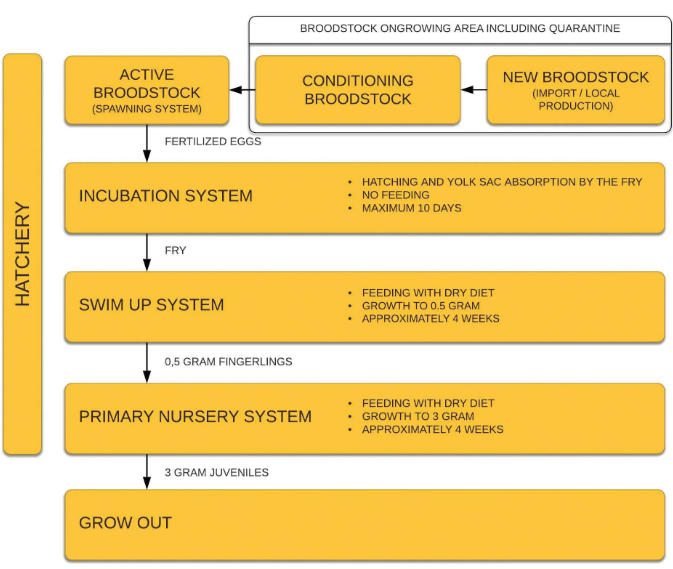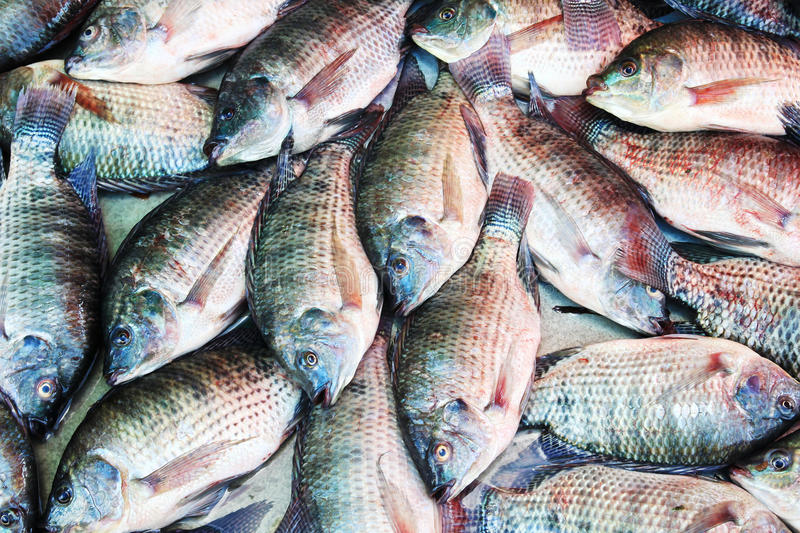|

Implementing RAS in Oman offers efficient water use, precise environmental control, and the potential for sustainable aquaculture
RAS technology: The Future of Oman Aquaculture
 OMAN
OMAN
Wednesday, July 17, 2024, 06:50 (GMT + 9)
A recirculating aquaculture system (RAS) is an almost completely closed circuit designed to continuously purify and reuse culture water. It’s a technology that recycles water after it undergoes filtration to remove suspended matter and metabolites. This method enables high-density fish farming while using minimal land and water resources.
Mechanical and biological filtration systems are used to remove or convert waste products such as solid waste, ammonium, and CO2 into non-toxic forms. The purified water is then saturated with oxygen and returned to the fish tanks, significantly reducing water and energy requirements. Although it is impossible to design a fully closed system, as non-degradable waste products must be removed and evaporated water replaced, RAS can reuse 90% or more of the culture water.
RAS technology allows for the intensive culture of various aquatic species, including fish, shrimps, and clams, in controlled environments. Unlike traditional aquaculture methods that rely on open ponds and raceways, RAS typically involves rearing fish in indoor or outdoor tanks, providing greater control over environmental conditions. This method maximises land and water use efficiency, making it ideal for areas with limited resources.

Schematic of a RAS system design, without scale.Diagram by Luis Carlos Sandoval Herazo
New water is usually added to the system only to compensate for losses due to splash out, evaporation, and waste flushing, ensuring that no more than 10% of the total water volume is replaced daily. By integrating filters, RAS technology effectively manages waste and sustains high-density fish populations, supporting sustainable and environmentally friendly aquaculture practices.
Advantages of RAS
Recirculating aquaculture systems offer significant advantages for modern fish farming. They efficiently recycle water, requiring minimal daily intake for cleaning filters and replacing evaporated water, which is beneficial in water-scarce areas and urban environments. It also allows for high stocking densities in smaller spaces, including repurposed urban structures like warehouses for farming operations, making them suitable for areas where space is limited.

Tilapia production schedule.Diagram from HATCHERY Feed & Management Vol 9 Issue 4 2021 by Aquafeed Media
However, for an efficient RAS system, certain infrastructure, feed quality, and staffing constraints must be met:
1. Continuous electricity supply is essential, as RAS operations rely heavily on powered equipment for water circulation, filtration, and environmental control.
2. Access to a reliable water source, preferably from a borehole, ensures consistent water quality essential for fish health and system efficiency.
3. High-quality fish feed is crucial, preferably high in protein and fat content with excellent digestibility, to support the optimal growth and health of the fish.
4. Technical expertise is required among staff to manage and maintain RAS components in a medium-tech environment, ensuring proper operation and troubleshooting capabilities.

Fish Farming (Tilapia Culture) in Oman
With proper planning, infrastructure, and species selection tailored to local conditions, RAS can be effectively implemented in Oman to support sustainable aquaculture practices. However, there are some factors that need to be considered for implementing RAS in Oman due to its hot desert climate:
- Temperature control: RAS needs careful management due to high water temperatures, requiring additional cooling systems for fish.
- Water quality: Coastal areas offer seawater access suitable for marine RAS, while inland areas need reliable groundwater or effective filtration.
- Electricity and infrastructure: Reliable power is crucial for RAS operations, powering pumps, filtration, and environmental controls.
Species suitability: Choosing heat-tolerant species like tilapia is key for RAS success in Oman's conditions.
Implementing Recirculating Aquaculture Systems (RAS) in Oman offers efficient water use, precise environmental control, and the potential for sustainable aquaculture. Challenges might include managing high temperatures, ensuring reliable electricity, and selecting suitable species like heat-tolerant fish. However, with proper planning and infrastructure, RAS can support sustainable aquaculture practices in Oman, maximising productivity while minimising environmental impact.

Author/Source: Dr Mohamed al Wahaibi /Oman Daily Observer
editorial@seafood.media
www.seafood.media
|



